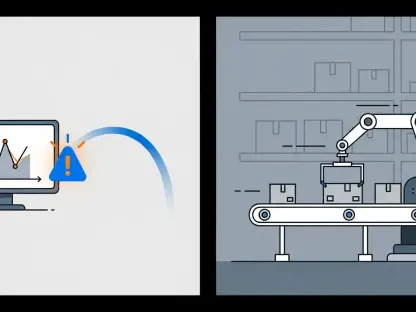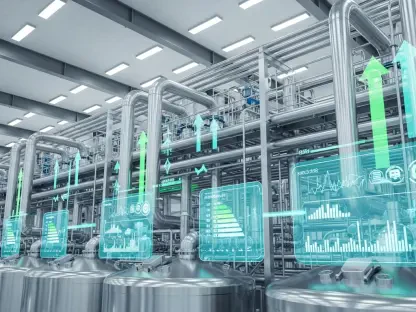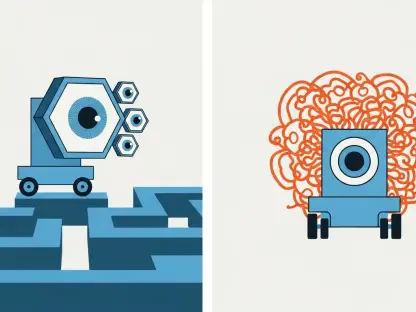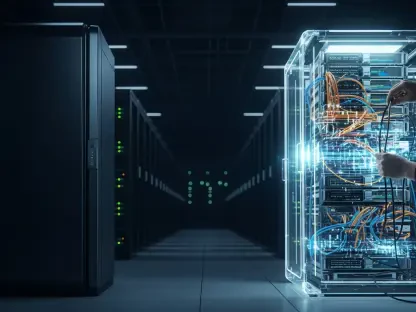In the ever-competitive world of AI technology, Meta has made headlines with its new Llama API. Partnering with Cerebras Systems, the initiative promises to offer unprecedented inference speeds, potentially reshaping the AI landscape. Laurent Giraid, a noted technologist with deep expertise in artificial intelligence, joins the conversation to shed light on what this collaboration could mean for the industry.
Can you explain the significance of Meta’s partnership with Cerebras Systems for the Llama API?
This partnership is a game-changer. By joining forces with Cerebras Systems, Meta is leveraging cutting-edge AI hardware to boost the capabilities of its Llama API. It positions Meta to deliver services with unparalleled efficiency, which directly benefits developers and broadens the possibilities of AI applications.
How does the Llama API differ from traditional GPU-based solutions in terms of inference speed?
The speed difference is astounding. While traditional GPU solutions operate at about 100 tokens per second, Cerebras’ technology enables Meta’s Llama API to process over 2,600 tokens per second. This dramatic increase allows for real-time applications that were previously unfeasible.
What prompted Meta to enter the AI inference service market?
Meta has always been at the forefront of technological advancements. By entering the AI inference market, they shift from merely providing open-source models to offering a robust service platform. This transition allows them to capitalize on the commercial potential of their AI developments.
Could you elaborate on the impact of offering inference speeds up to 18 times faster for developers?
Such speed allows developers to explore new frontiers in AI applications. Real-time processing opens up avenues for complex integrations like conversational agents or dynamic voice systems—projects that demand rapid exchange and comprehension of data.
How does Cerebras’ specialized AI hardware contribute to this speed advantage?
Cerebras’ architecture is particularly well-suited for AI tasks, thanks to its wafer-scale engine. This hardware accelerates data processing by minimizing the latency traditionally found in GPU configurations, thus streamlining computational tasks and vastly improving speeds.
In what ways does the partnership with Cerebras enhance Meta’s Llama models?
By integrating Cerebras technology, Llama models can perform more efficiently, handling greater volumes of intricate computations faster. This enhancement not only improves performance but also expands the models’ potential applications significantly.
What specific applications might benefit from the increased speed provided by the Llama API?
Applications needing immediate responses, such as virtual assistants, real-time translation, and high-speed data analysis, stand to gain tremendously. The swift processing allows for more sophisticated AI interactions and improved user experiences.
How does the Llama API create new opportunities for application developers?
Developers now have the ability to build more complex and responsive applications. The toolkit Meta provides enables the customization and optimization of models, allowing innovations that align with unique business needs and technological visions.
What is the significance of Meta transitioning from a model provider to a full-service AI infrastructure company?
This transition represents a strategic pivot towards creating more comprehensive offerings that tie developers into the Meta ecosystem while generating new revenue streams. It’s a move that aligns technological prowess with business acumen.
Can you detail how Meta ensures the privacy of customer data within the Llama API service?
Meta emphasizes data privacy by ensuring that customer data is not used for training its models. Additionally, models developed via the Llama API can be transferred elsewhere, providing users with greater control over their proprietary data.
How can developers customize their AI models using the Llama API?
The Llama API provides tools for fine-tuning and evaluation, allowing developers to tailor AI models to specific contexts or requirements. This customization extends the versatility and appeal of AI solutions for various industries.
What measures does Meta take to differentiate its API from competitors in terms of data usage?
Meta distinguishes itself by allowing developers full ownership over their data while ensuring it is not repurposed for Meta’s training needs. This transparency and commitment to privacy set them apart from some competitors’ closed-model practices.
Where will Cerebras’ data centers be located to support Meta’s new inference service?
Cerebras will distribute its infrastructure across North America, with data centers in locations such as Dallas, Montreal, and California, among others. These strategically placed facilities will support Meta’s service reliably and efficiently.
How does the business arrangement resemble that between Nvidia and major cloud providers?
The partnership functions similarly to traditional cloud hardware collaborations, where one party provides specialized computing equipment while the other offers scalable resources. This alliance ensures developers have constant access to high-performance technology.
Why did Meta also partner with Groq for fast inference options, and what does this mean for developers?
By teaming up with Groq, Meta diversifies its technology stack, giving developers multiple high-performance options. This partnership underscores Meta’s commitment to providing adaptable and customizable solutions tailored to varying developer needs.
What potential effects could Meta’s entry and performance metrics have on competitors like OpenAI and Google?
Meta’s performance metrics send a clear message of competitive intent, likely prompting incumbents to innovate and enhance their own offerings. This competitive drive could accelerate advancements industry-wide, benefiting developers globally.
How does Cerebras’ integration with Meta’s services validate its AI hardware approach?
The partnership with such a major player as Meta confirms Cerebras’ technological capabilities and foresight in developing hardware that meets the demands of modern, intensive AI computations, setting a benchmark for future collaborations and innovations.
What opportunities exist for developers to access the Llama API in its current limited preview?
Developers can express interest in early access, which allows them to be at the forefront of leveraging this cutting-edge technology. Early adopters will have a unique chance to influence the API’s future enhancements and implementations.
How does Meta’s choice of specialized silicon affect the future direction of AI technology?
It signals a move towards more bespoke, efficient computing solutions in AI, which could drive the industry away from generalized, one-size-fits-all GPUs. This choice prioritizes performance—critical for the next wave of AI innovation.
How does Meta plan to roll out the Llama API to a broader audience in the coming weeks and months?
Meta will gradually expand access, likely informed by initial feedback and performance during the preview phase. This systematic rollout ensures scalability while refining the service for optimal performance and user satisfaction.
Do you have any advice for our readers?
Stay curious and informed about technological advancements, as the pace of change in AI is accelerating. Engaging with emerging technologies like Meta’s Llama API can provide invaluable insights and opportunities.









